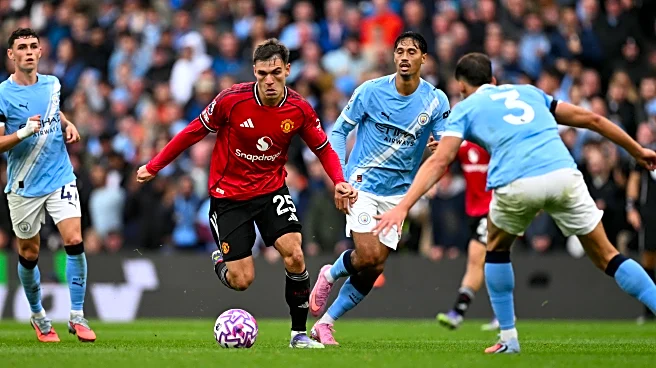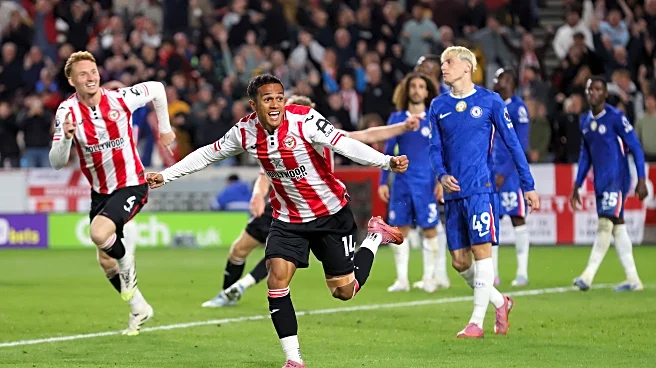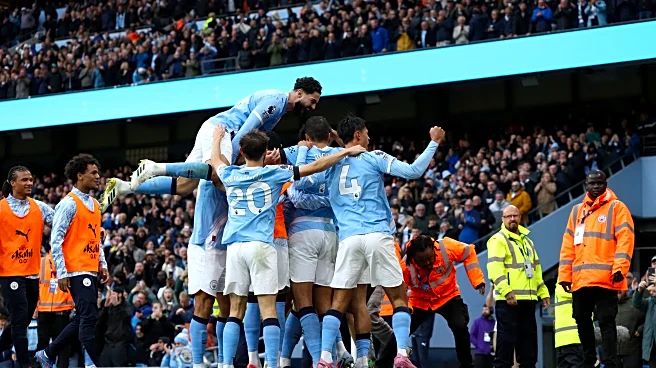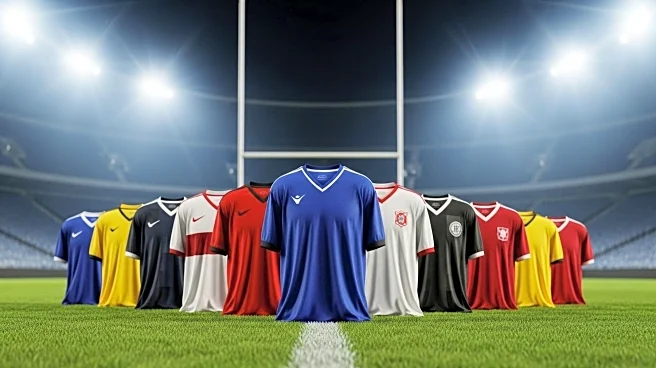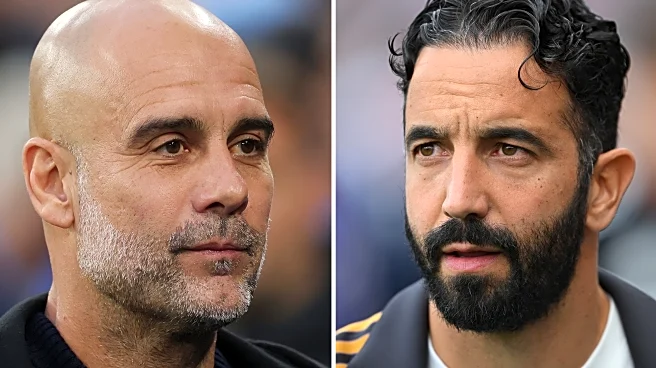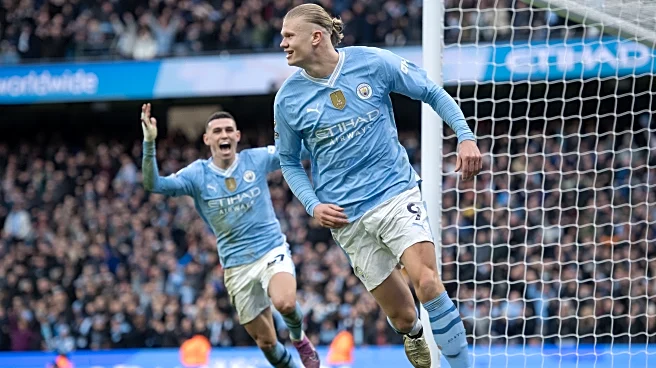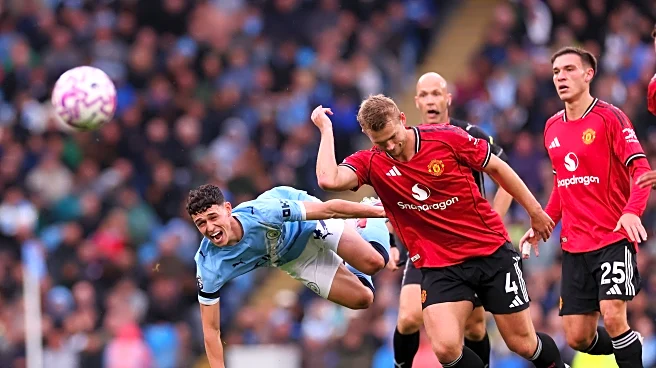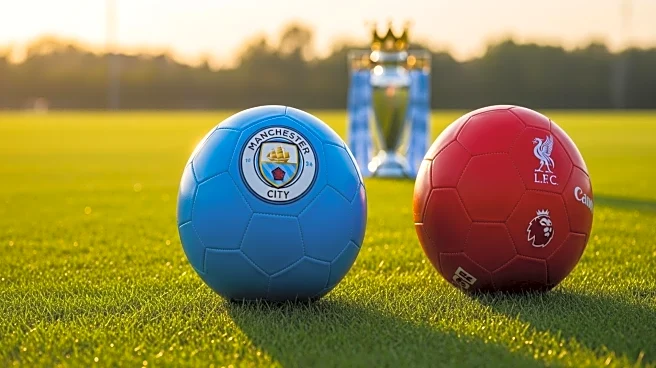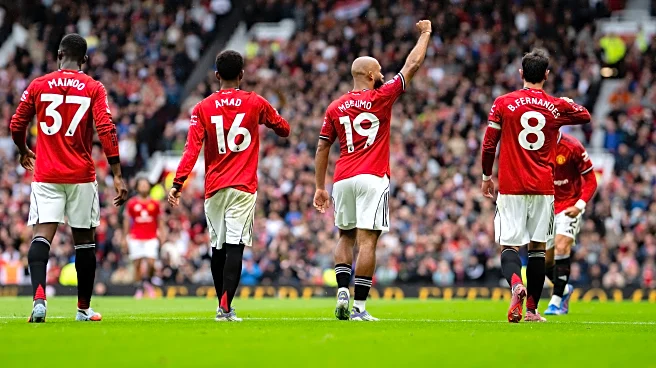Tactically speaking, Manchester United’s matches are beginning to take on a very familiar pattern.
Last season, we watched clubs like Crystal Palace, Nottingham Forest, Wolves, and Bournemouth score early goals against United, then be more than happy to drop deep and let United keep possession of the ball and watch United trip over themselves as they’d struggle to generate any scoring chances to get back in the game. Not really much surprise there, considering that’s the way most of those teams play.
It was Ange Postecoglou in the Europa League final who was the first to say “screw my way of playing, if Manchester United can’t score when you just let them have the ball, then the best way to beat them is to just let them have the ball.”
Other managers have taken note. On the first day of the season, Mikel Arteta’s Arsenal rolled up to Old Trafford and played, very unlike how Mikel Arteta’s Arsenal have been known to play. United held 56 percent possession against the heavy possession-based Arsenal in the first half. In the second half, that number jumped to 65.8 percent. It was a deliberate change from Arsenal and it caught United by surprise, with United only taking one shot in the first 24 minutes of the second half. They ultimately managed 12 shots but never generated a big scoring chance.
With Manchester City struggling in the first three games of the season, I wondered whether Pep Guardiola might abandon his usual rigid possession structure to just play the way that’s become a proven success against United?
It turns out, even Pep Guardiola likes easy W’s.
It was a Manchester Derby unlike any we’ve seen before as City looked unlike any Pep Guardiola side we’ve seen before. They came out looking to be direct. Just like Grimsby Town and Burnley, they targeted balls out wide behind the wing-backs.

The intention being to isolate United’s back three and spread them out.

When City got the ball they didn’t look to settle it down and move everyone into position. Instead, they attacked. There were poor first touches from both teams as certain players struggled under pressure but gaps and spaces were open aplenty. It was a fun game as City really made it open.
That all stopped when City found their breakthrough and just stopped playing like Manchester City. Rather than holding the ball and killing off the game in that boring way we’ve seen City do time and time again, City decided to do what everyone else is doing: sit back, let United have the ball, and watch them struggle.
United ended the match with 54 percent possession – the first time they’ve ever had more than City under Pep. That number jumped up to 69.7 percent in the second half. Last season City averaged 12.09 passes per defensive action (PPDA). Coming into Sunday’s match, City were averaging a PPDA of 11.39, but on Sunday their PPDA was 19.21. Per Mark Stats last season average line height was 51.24 – second highest in the league. On Sunday their line height was a very deep 39.6 – over a meter deeper than the lowest team in the league’s average last season.
This was a clear strategy from City. They did it because why come up with your own game plan when you can just attack the same structural flaws in Ruben Amorim’s system that everyone else is having success attacking? Work smarter, not harder.
There’s not much to say about the system that hasn’t already been said so today we’re going to briefly talk about another topic we’ve almost beaten to death – the midfield.
It’s only four games into the season and United are already in midfield hell. The team’s strategy in the early parts of the match was to launch long balls in hopes that newly signed striker Benjamin Sesko could head them down to his teammates. This was pretty effective, albeit United couldn’t turn them into any shots. It does show a lack of faith in the midfield and calls into question why you’re starting Bruno Fernandes there if you’re just going to bypass them to begin with?
United like to play with the ball at the back and bait the opposition’s press before launching long balls into the channels. This is also another way of bypassing the midfield.
Once City took the lead, United had to play with their midfielders, which badly exposed United’s midfielders. Despite trailing just 17 minutes into the match, United had managed just four shots over the first 80 minutes of the match.
One of the reasons City decided it was worth the risk to play so open at the start of the game – and then cede possession – is because they knew United’s midfield was so weak. City got their lead and control of the game with a tactical attack of United’s midfield – but their third goal came from just attacking the weaknesses of specific players.
When United were 2-0 down they brought on Kobbie Mainoo for Noussair Mazraoui. This change mean Amad moved from the left 10 position to right wing back, with Bruno Fernandes pushing up to the number 10 and leaving Mainoo and Ugarte as the midfield pair.
That pair leaves United deathly short of progressive passing from midfield. For all of Kobbie Mainoo’s great traits, forward passing is not one of them. He’s currently in 25th percentile among central midfielders in Europe’s top five leagues in progressive passes over the past year. Albeit that’s still better than Ugarte who sits in the 16th percentile.
The situation begins with United getting players forward but the attack fizzing out. Amad tries to pass inside to Bryan Mbeumo who decides to reset things by passing it back to Mainoo.
At this point, Mainoo is in line with Ugarte and Luke Shaw has stepped into line to make a three-man midfield. Matthijs de Ligt has pushed up as well, meaning the three midfielders only have Harry Maguire behind them. They need to know that.
City has 11 men behind the ball here. The closest player to Mainoo is striker Erling Haaland, who is not known for his defensive prowess or work rate.

The lack of creativity from the second level is one of the scenarios where not having Bruno – or a player like Christian Eriksen – in midfield really hurts United. When United get men forward and the ball comes back out from the first line of attack, they don’t have someone who can put the ball back in and create an attacking situation from this scenario.
When the ball comes out to Mainoo, Haaland slowly steps towards him. The time to assess the situation is now, but instead, Mainoo quickly plays a square ball to Ugarte.

Ugarte has time and space but never uses it. Ugarte takes one touch and plays a lazy pass over to Luke Shaw.

City know he’s not going to make a dangerous pass here. He’s going to switch the ball over to Luke Shaw. City isn’t putting United under any pressure until Ugarte turns slowly towards Shaw. That’s when Bernardo Silva springs into action and runs towards Shaw.
Receiving under pressure, Shaw takes a poor first touch. He ends up in a tussle with Bernardo and the ball gets played into the space between Ugarte and Maguire. Ugarte doesn’t react, forcing Maguire to step up and do anything to make sure Haaland doesn’t get the ball.

Unfortunately Maguire’s clearance goes right to Bernardo Silva, allowing him an easy through ball to Haaland, and when this happens you’re not stopping Erling Haaland.

This goal comes from the flaws in United’s midfield. United don’t have midfielders that can provide creativity from the second level. Therefore, they need to throw several players forward to try and create scoring chances.
With so many players forward, the midfielders don’t realize that they are protecting a back one. Rather than having any urgency they keep playing within their comfort zone making simple square passes. As soon as Bernardo Silva realizes what’s happening, he pounces.
The midfielders never realized that they were essentially the last line of defense. In this situation, despite being so high up the pitch, any mistake could easily be as dangerous as turning the ball over inside your own box.
Teams have figured out Manchester United. They’re not going to need to spend loads of time preparing to play United when they could just run back the same tactics everyone else has been using until United stops them. In the meantime, they’ll focus on finding the weaknesses of individual players, identifying situations where you can pressure someone into a mistake, and create scoring chances as easy as this one.
